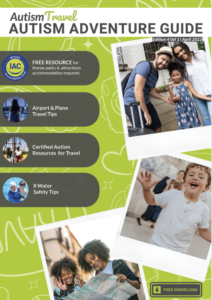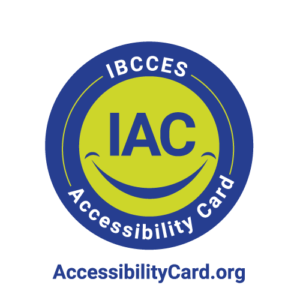
By Jeremy Farrell of AutismDriving.com (article republished with permission)
Road trips are a fairly common feature of American life. Some people love them, and some people hate them, but we all have those long drives where it takes several hours to arrive at a location. While people can certainly drive for several hours, and many even enjoy it (autistic individuals included), it can often be full of stress and surprises. This is especially true because people’s moods typically change over the course of a day. As an autistic individual myself, I know how fast a road trip can go from being great to feeling like it is a heavy burden to continue. It is a natural process of how human bodies operate every day. And whether we like it or not, our mood impacts our driving in various ways. Road trips can be a good time, or even just a means to end for an autistic individual, but it doesn’t have to be something to fear! In this blog post, I am going to dive into how to have a safe and successful road trip as an autistic individual! Though I feel this advice could likely help many people outside of the autistic community.
Before we begin discussing how to counter the potential difficulties that arise during a road trip, let’s discuss exactly what those difficulties are. As stated earlier, road trips can lead to many different unexpected challenges simply due to how long they are and how much a driver’s mood can change over that timeframe. The most important thing to mention here is that long drives lead to fatigue. Eventually, people often get exhausted by the act of driving if they drive for long enough. Fatigued driving can be dangerous because it impairs driving performance, therefore increasing the possibility of being in a car accident. Fatigue can also come from and be piled onto by a combination of lack of sleep and continuous work hours. It’s also important to mention sensory factors and how they can grow over time. A certain feel or smell might be okay to deal with for a short drive but may start to really get to an autistic driver after a few hours. This can add to the dangers of fatigued driving by causing drivers to become exhausted even quicker. Fatigued driving can be a very dangerous thing, and that’s why I’m here to go over a few potential solutions for fatigued driving that I use to help plan and execute every road trip safely and successfully.
Having Special Interest Objects Nearby:
Special interests can motivate autistic individuals during difficult times and even help calm us during certain situations. Autistic individuals’ tendency to form special interests is often not thought of as a potentially powerful resource, but it really is. To list a personal example, I use video game music to stay consistently hyper-focused while I’m driving. This helps motivate me and keeps my mood consistent. And that keeps me ready and able to take on the whole day! It’s also just neverendingly exciting to get to play my favorite music while I drive, and that makes driving more exciting. The cool thing about special interests is that what they are and how they’re utilized can greatly vary from individual to individual. I’ve talked to several individuals who use everything from podcasts, to fidget toys (when parked of course), or even just plushies on the dashboard to feel excited and focused while driving. I’ve even met individuals who always make sure they drive with a passenger just so that they can at least talk about their special interest, whatever it is, while they drive. The truth is any individual with a special interest can experiment to find what works for them and what doesn’t. There are endless ways to incorporate a special interest into a long drive or every drive! As I like to say, as long as the driver is focused on the road, whatever helps them do it is fair game.

Using Google Maps to Plan the Trip:
In my opinion, Google Maps is one of the best ways to prepare for a road trip, and it’s so often underutilized! Within a few simple minutes on Google Maps, or using any of the many other similar services, someone can search up and look through pretty much every restaurant and gas station on any road anywhere in all 50 states. I personally like Google Maps for this, but it’s mostly just about knowing you have control over your route and know how to get where you’re going as soon and comfortably as possible. Planning out the trip beforehand using a mapping service can be super useful too! This way an individual can see and prepare for every step of the trip. I have found that for me and many other autistic individuals this is a game changer and can make driving so much more manageable. Google Maps also has a useful feature where one can switch directions from getting there by car, to by subway, to even by bicycle. Even live traffic can be observed in real time on certain websites these days. Every driver today has so much information at their disposal, and one of the best things drivers can do with this info is map out the route to their destination more effectively and thoroughly than ever before. Using Google Maps to help plan a road trip is just another way of using all the resources you have available to have a safe and successful trip.
Planning Rest Areas to Stop at Throughout Your Trip:
In each state, there are designated rest areas on major highways that provide drivers a place to rest for a bit. There are almost always restrooms and a place to get gas at these locations, and some even have food courts or little convenience stores. These rest stops are another great resource for drivers on long road trips! Driving for hours upon hours can really tire you out, not only mentally but physically as well. At a certain point, every driver feels the need to get out of their vehicle and stretch for a bit. Some people I know use the opportunity to walk around or have a nice meal to regain focus for further driving. It’s a good opportunity to reset one’s sensory input and a good chance to satisfy any sensory needs without it affecting driving safely. Furthermore, a driver doesn’t have to be at one of these designated areas to take this kind of needed rest. Just find a place you can pull over for a longer period of time without being on the side of the road or in anyone’s way. It’s crucial for autistic drivers to listen to their minds and bodies when they say they need a rest, and to use their resources to handle it healthily!

Getting Plenty of Sleep:
This one may seem a little obvious at first, but the longer you’ve been driving the more you realize its importance! Sufficient sleep is the most effective way to combat the menace of fatigued driving, it’s really that simple. Before you drive, getting enough rest is crucial, and if you’re not ready to drive, it’s okay to not drive because you’re too tired. The night before a road trip is especially important and it can be really beneficial to get a good six-to-seven-hour sleep. That typically helps most drivers feel ready for the day and ready to focus on driving safely!
Don’t forget that there are infinite tips and tricks that drivers, including autistic drivers, can take advantage of to have safe and successful road trips. The strategies listed and explained above are not the only strategies out there, and I encourage any driver reading this to really explore what works for them. It is up to the driver to use the tools and resources available to them to have a successful road trip. Don’t be afraid to get creative, and let’s all make our next road trip a pleasant and safe one!
—-
For more information about their driving courses and services, visit https://autismdriving.com/



 IBCCES Accessibility Card Now Available as a Mobile App
IBCCES Accessibility Card Now Available as a Mobile App